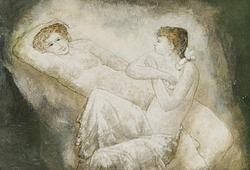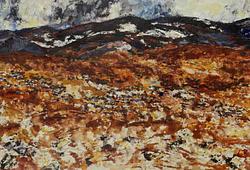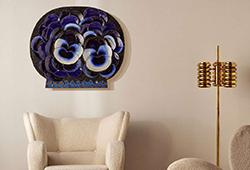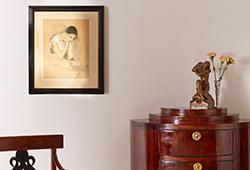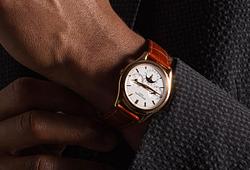Olle Bærtling
"AGUIBA"
Signed Baertling and dated 1958 verso. Canvas 180 x 92 cm.
Provenance
Halmstad University.
Private collection, Germany.
Exhibitions
Clearly First, New York, 2002.
More information
Like many other artists, Baertling encountered criticism in his time. For a long while in Sweden he was seen as “the constantly controversial banker who was trying to paint” despite the fact that, unlike many contemporary artists, his reputation extended far beyond the borders of his homeland during his lifetime.
Baertling’s painting developed step by step from figurative to non-figurative from the 1940s onwards. When borders opened up after the Second World War Baertling, like many others, travelled to France-the stamping ground for new art. The 1950s were the decade that set the tone for Baertling. In the early years, he took longer and longer leaves of absence from his banking job at Skandinaviska Banken and travelled to Paris. There, in the Mecca of art, he encountered the new winds that were blowing through the art world at the Salon des Réalités Nouvelles and sought out artists such as André Lhote, Fernand Léger, Victor Vasarely, Richard Mortensen and Auguste Herbin. The latter became vital to his continued artistic development, introducing Baertling to the far-sighted gallery owner Denise René, who immediately installed him in her “stable of Constructivists”.
Baertling abandoned Op art, which had once inspired him, and started to create a style entirely his own, in which triangles and diagonals became the main theme. From basic geometrical elements, he built up a new imagery of proportions and synthetic, programmed colour harmonies. Intense fields of colour enclosed in black diagonal contours create a dynamism that few other artists managed to achieve. These slightly arched black lines, which Baertling himself called “sabre lines”, were added at the very end. Baertling preferred artificial shades of colour which did not conjure up associations with nature and considered black to be a magical colour; light, happy and beautiful. Gunnar Berefelt describes the impact of the colours on each other as follows: “The contrast at borders should probably be asserted as the most striking and active effect. In Bærtling’s art, when two colours gain a sufficiently long and distinct boundary, they seem to alternately encroach into the domain of the neighbouring colour. Just at the boundary line, both colours oscillate, flutter.”
Artist
Olle Bærtling was born in Halmstad in Sweden and is most notable for his painting and sculpture. Bærtling studied like Bengt Lindström in Paris for André Lhote and Fernand Léger. His first exhibition took place in Stockholm in 1949. Bærtling works foremost in a geometric, non-figurative style, approaching his art as a scientist would his research. In 1956 Bærtling discovered his open form, the open trangle with sharp angles which express speed. When in 1956 he positioned the apex of the triangle beyond the boundaries of the frame, the canvas became merely a segment of an event occurring beyond our visual field. The sense of speed is emphasized by the colour, which gives the impression of higher velocities the closer to the triangle’s apex. Black outlines are strong characteristics of Bærtling’s art, while they may seem straight, they actually bend inwards towards the large fields, counteracting their outward pressure. Colour was also essential to Bærtling’s work, whereby it was imperative that they could not be found in nature and were not associated to any form or object. Thus Bærtling only utilised secondary colours: violet, orange, green, and Bærtling-white (a week green-tinted colour). His open form is most evident in the sculptures he made from 1958 onwards. Bærtling consistently delved into the interplay between colors and shapes, remaining unaffected by external artistic trends throughout his life. Today, we can see how artists such as Ann Edholm have been inspired by Bærtling's creations.
Read more



